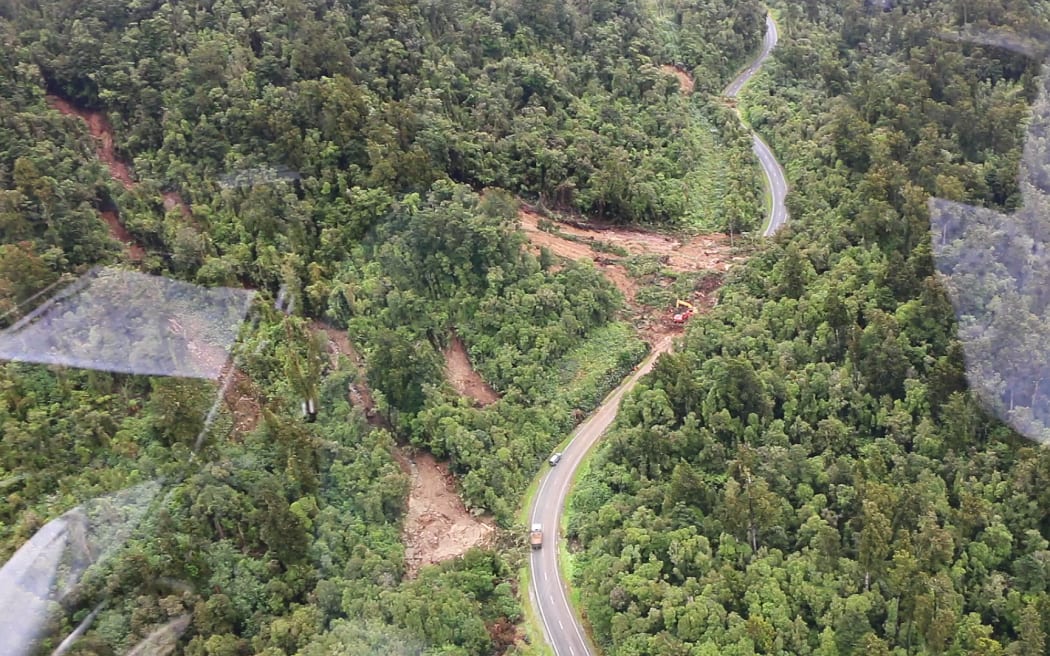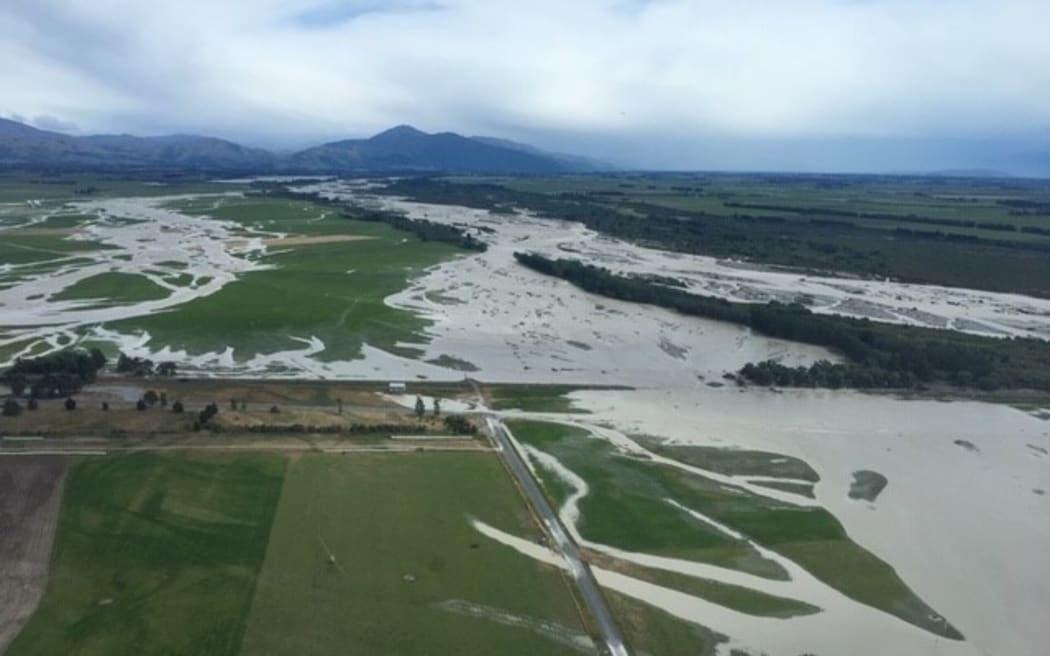The group representing the road transport industry blames a lack of investment in roading for the degree of damage caused by storms.

A washout that's effecting State Highway 6 on the West Coast. Photo: RNZ / Conan Young
Weather over the weekend caused mayhem in the South Island, cutting off road access and stranding hundreds of people after bridges washed out and hillsides slipped on to highways.
NZ Road Transport Forum chief executive Nick Leggett said vital supply lines were cut, including those needed to get food and supplies in to stricken areas, and produce out to markets and retailers.
He said investment in highways had decreased in the last couple of years, when it was needed to counter the effects of increasingly damaging storms.
"If you talk to road users - people who drive cars but also truck drivers, they say the maintenance standards are slipping, and actually, if you have well-designed, well-built roads what you find is that they don't fail as much in extreme weather."
The New Zealand Transport Agency (NZTA) has spent more than $150 million on emergency repairs to damaged highways over the past two years, which was a large increase on five years ago.

The Rangitata River flooding across paddocks and roads. Photo: Supplied/Peter Lyttle
Information provided to the Minister of Transport showed that most of it was the result of four cyclones hitting the country within a short timeframe.
Road crews were currently working around the clock to repair access to at least temporary levels.
The recent storms, including over the weekend, showed how tenuous the country's road freight links were, Mr Leggett said.
Current disruptions to State Highway 6 on the West Coast had a massive impact on the ability to move vital food and freight to isolated communities, and transport primary product out.
"These things are the backbone of our economy."
Mr Leggett agreed the effects were also indicative of a changing climate, and also that more investment in roads was needed.
He said it was possible to mitigate against slips.
"I don't buy in to the thinking they're not preventable, but we are having more extreme weather so what we have to do is prepare for that in the way we engineer and the way we invest, as well as recognise that we aren't going to be able to plan for every eventuality."
It was matter of balancing more investment and targeted spending with the reality that New Zealand would get more extreme weather, he said.
When trucks stopped, supermarket shelves emptied within three days, he added.
"Trucks are the good cholesterol of our economy - they moves things around in a timely fashion and when they can't do that, then the economy is less productive and people's lives suffer."
He said it worked both ways, including that large food-production areas like South Canterbury were restricted in getting product north.
"The goods that go out from primary production are critical for the economy and the wellbeing of communities all around New Zealand.
"It's important to remember where food comes from in this country and how it gets from where it's grown to where it's consumed, and that is on the back of a truck."
The industry would be working with the transport agency to ensure critical routes damaged over the weekend were prioritised, he said.
But Transport Minister Phil Twyford said the government is investing more in roads than ever before.
"This is partisan politicking by Nick Leggett who is simply incorrect," he said in a statement.
Mr Twyford said the cost of extreme weather to the state highway network doubled from $26m in 2014/15 to $72m in 2018/19.
The government increased the state highway maintenance budget by more than $200m compared to the previous government, to a total of $2.1 billion.
"Last year, NZTA delivered its biggest recorded programme of road maintenance and is on track to deliver 60 percent more repairs compared to under the previous government - that’s around 350kms more a year."
Mr Twyford said road maintenance expenditure flatlined under the last government, while labour and material costs increased by 12 percent and traffic grew by 15 percent.
"We are now getting on with addressing the maintenance backlog caused by nine years of underinvestment," he said.


